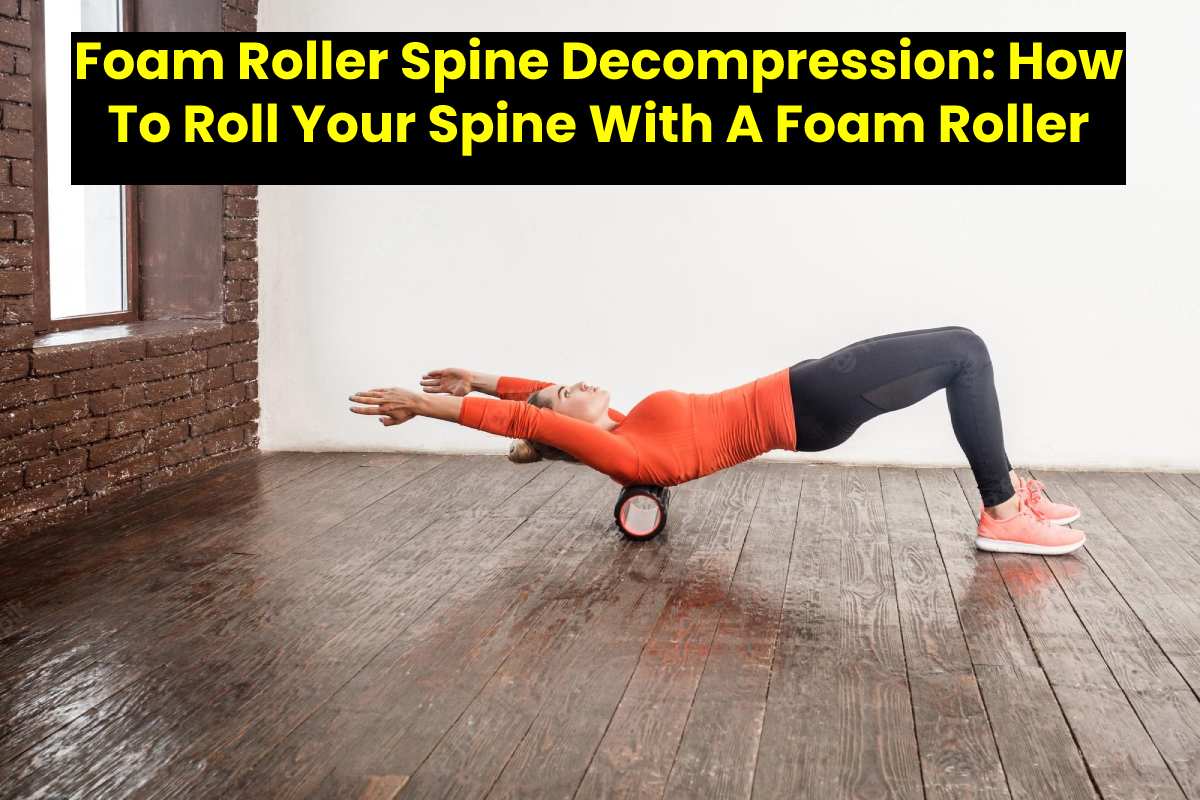Foam Roller Spine Decompression: Foam rollers are a very affordable choice that can ease back discomfort from various diseases. However, having said that, if you don’t take precautions, you might cause more harm to your spine than benefit, as with most treatments. So today, we’ll advise you on effectively utilizing a foam roller to treat your back discomfort.
Foam rollers are self-massage instruments that function by lightly pressing your spine, neck, or extremities for those of you who are unaware. Here’s the best way to apply them.
Table of Contents
Talk To Your Spine Specialist
As with any new treatment method, run it by your spine specialist first. Not only can your doctor walk you through some steps for using the roller, but they can explain where direct pressure should remain avoided. A physical therapist can also be helpful, but speaking with your surgeon is probably best if you’re off surgery.
Avoiding Over-Rolling Sensitive Areas
If you have a tender spot on your spine, you might think that’s where you should concentrate your rolling efforts, but you’d be wrong. Overdoing it on your sensitive areas can lead to nerve or tissue damage. The sensation of pressure may feel good, but you shouldn’t spend extra time in these areas. Instead, limit yourself to 15-30 seconds of light pressure before moving elsewhere.
Avoid Your Lower Back
Even if your pain stems from your lumbar spine, you’ll want to avoid pressuring this area. Your shoulder blades and back muscles are a natural shield for your upper spine, but the lower spine doesn’t have as much protection. In addition, using a foam roller on your lower spine can cause the spinal muscles to contract, causing even more problems, especially if you’re dealing with a pinched nerve or bulging disc. Instead, focus on your ribcage and glutes, as muscle tightness in those areas can contribute to lumbar spine pain.
Take It Slow
Inexperienced rollers tend to roll the device quickly or in a rapid back-and-forth motion, which isn’t doing much good for your body. You’ll be more apt to relieve spinal muscle tightness if you go nice and slow. Moving about an inch or two each second is a good pace. It allows your muscles to relax to the pressure instead of just sensing it.
If you are dealing with muscle tightness or soreness, ask your spine specialist if you would benefit from a foam spine roller. Then, contact us today for more info about the device or to talk to a skilled spine surgeon.
Spinal Decompression Process
Spinal decompressing offers a non-surgical option for patients suffering from back pain, herniated, bulging, degenerating discs, and other issues associated with the spine. You will lie on a computer-controlled motorized table, fully clothed, during a session. The type of bench used by your doctor will determine if you will be deceitful, unhappy, or face up. The inferior half of the table will move through the top half of the table and remains motionless. Your doctor will place a bind around your hips and ascribe it to the lower part of the table. Your upper body will also remain fitted with a harness attached to the table’s upper part.
The Therapy Session will Typically Involve 15 to 30 Treatments Every 4 to 6 Weeks.
However, treatment can vary depending on your treatment’s circumstances and how well your body responds to the spinal decompression procedure. These back decompression treatments last between 30 and 45 minutes. Contingent to your specific issue and treatment requirements, your doctor may combine spinal decompression therapy with additional treatment options such as cold or heat therapy or even electric stimulation. These other therapies may be done before, after, or during your spinal decompression session. Each additional treatment has different benefits that can help treat your specific condition. You can discuss these other options with your doctor to find out if they may be something that is right for you.
Does Spinal Decompression Hurt?

Foam Roller Spine Decompression: It is scarce for a patient to experience any pain throughout spinal decompression therapy. However, you will texture the stretch in your spine. Due to spinal decompression therapy’s gentle nature, most patients do not know pain during a session, and it isn’t unheeded for patients to fall asleep on the traction table.
The negative space shaped during spinal decompression can help relieve pain and pressure on degenerating, herniated, and bulging discs. In addition, it is also a treatment for sciatica. Many patients report a noticeable development after the first few sessions. However, continuing the therapy as your doctor recommended is essential to achieve optimum results.
If you begin to notice other back, neck, leg, or arm pain after you undergo spinal decompression therapy, you should notify your doctor immediately and stop spinal decompression therapy. You may have an underlying condition you and your doctor may not have remained aware of, Or your body may not respond well to spinal decompression therapy, and you may not be a good candidate.
Conclusion
Foam Roller Spine Decompression: Daily tasks like exercising, sitting and bending over put a lot of stress on the upper back area. And we’re not going to quit doing any of these anytime soon. This region should always remain more flexible anytime it starts to feel tight. Using foam rollers is a great technique to ease discomfort and loosen up your thoracic spine. A foam roller will benefit your entire body, not just your upper back. The importance of thoracic spine mobility exercises and all you need to know about them remain explained here.
Also Read: Kettlebell Rack – Introduction, And More

